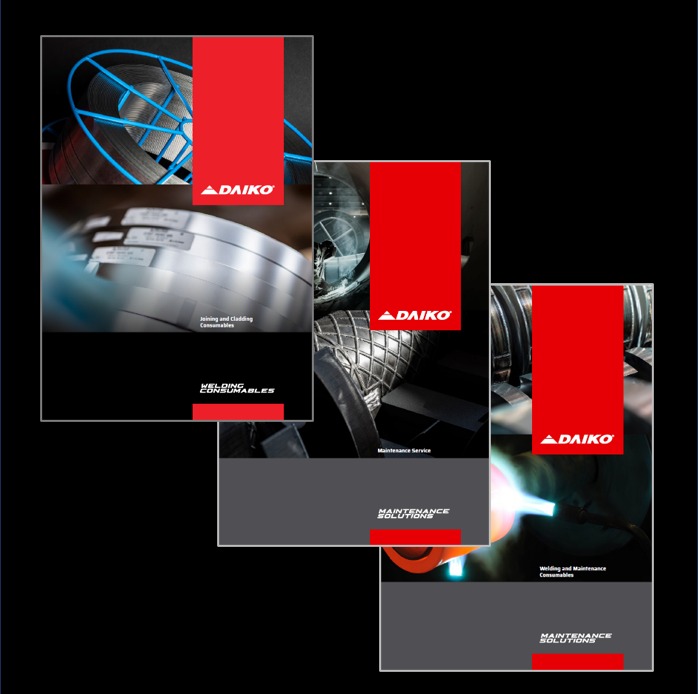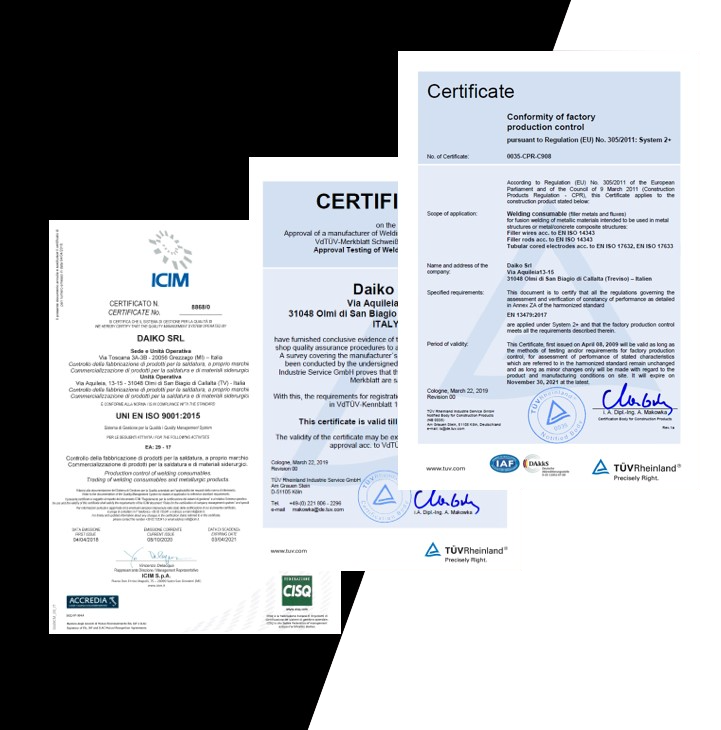- Home
- >
- All DAIKO products
- >
- NICKEL ALLOYS
- >
- 602
602
Application
Crafted to match the composition and properties of alloy 686, these consumables exhibit resilience in diverse conditions. Elevated Nickel and Molybdenum offer resistance in reducing conditions, while high Chromium ensures resistance to oxidizing media. Molybdenum and Tungsten enhance resistance to localized corrosion, such as pitting. Low Carbon minimizes grain boundary precipitation for corrosion-resistance in heat-affected zones of welded joints. This alloy provides a tough Nb-free weld metal for dissimilar welds in superaustenitic, superduplex stainless steel, or combinations with Ni base alloys. It also offers exceptional as-welded resistance to sulfuric or hydrochloric acids, their mixtures, and crevice or pitting corrosion in hot concentrated acid chloride solutions. Primarily used in chemical, petrochemical, oil, gas, refining, and marine applications, they are valuable for dissimilar metal welding, protecting against preferential weld-metal attack when joining Mo-containing alloys or alloy-clad steels.
Alloy Type
The nominal composition (wt. %) of filler metal of this classification is 63 Ni, 25 Cr, 9.5 Fe,
and 2.1 Al.
Microstructure
High-carbon Ni-Cr-Fe alloy with a face-centered cubic microstructure.
Materials
Nickel-chromium-iron-aluminum alloy type UNS N6025 to itself and Nickel chromium-iron to steel and to other nickel base alloys.
EN W.Nr.: 2.4633 (NiCr25FeAlY).
UNS: N06025.
PROPRIETARY: Nicrofer 6025 HT (VDM).
EN W.Nr.: 2.4633 (NiCr25FeAlY).
UNS: N06025.
PROPRIETARY: Nicrofer 6025 HT (VDM).
Welding & PWHT
Prior to welding or heating any nickel-base alloy, it's imperative to ensure the base metal is clean. Oil, grease, paint, lubricants, marking pencils, temperature indicating materials, threading compounds, and similar substances often contain sulfur or lead, posing a risk of cracking (embrittlement) in both the base metal or the weld metal during these processes. Cleaning the base material on both sides of the seam and the filler material (welding rod) with acetone is recommended. Utilizing the stringer bead technique is essential to guarantee a low heat input (max < 1 kJ/mm), and the interpass temperature should stay below 120°C. Normally, neither pre- nor post-weld thermal treatments are required. However, to mitigate the risk of relaxation cracking in material exposed to service temperatures between 600 and 725°C after cold working and/or (repair) welding, annealing can be considered.
Products of the line 602
| Product name | Process | AWS specifications | EN ISO specifications | |
| DAIKOWM 602 | GMAW |
AWS A5.14
ERNiCrFe-12 |
EN ISO 18274
S Ni 6025 |
|
| DAIKOWT 602 | GTAW |
AWS A5.14
ERNiCrFe-12 |
EN ISO 18274
S Ni 6025 |


